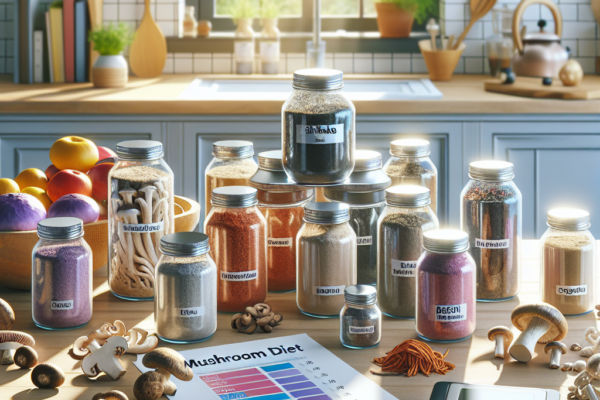Blog
Why Magic Mushroom Tea Turn Blue?
Mushrooms have long been recognized as symbols of spiritual power and can be an incredible source of healing and divination when consumed. Ancient cultures venerated mushrooms for their healing and divinatory properties and would incorporate them into ceremonies and rituals to celebrate them as healing agents or psychic connectants, often attributing any color changes seen with mushrooms to its potency or connection to spirit world – although today many mushroom lovers use it as an informal gauge to measure psychoactive strength; recent scientific research has shed new light on its intricate inner workings by uncovering an intriguing chemical orchestra that plays out within every mushroom when exposed under pressure from being consumed!
In 2019, a group of German chemists published the first comprehensive explanation for why magic mushrooms turn blue. Their research demonstrated that psilocin molecules undergo a complex dimerization reaction that produces polymerized oligomers with distinctive blue hues; similar to what happens during apple or avocado browning due to polyphenol oxidase enzyme oxidation reactions.
Blueing reactions do not provide an accurate reflection of psilocin’s potency or effectiveness; rather they result from degradation and deactivation by oxidative enzymes present in mushroom microenvironments; this may indicate that certain mushrooms have lower concentrations of psilocin or psilocybin due to age or environmental conditions.
The blue pigment is composed of a complex mixture of linked psilocyl oxidation products, including quinoid psilocyl oligomers similar to indigo used to color jeans. This discovery marks an impressive leap forward in our understanding of this fascinating reaction and provides further evidence that it involves multiple steps of oxidation cascade rather than simple psilocin oxidation.
There are various factors that can determine the speed and intensity of a mushroom’s blueing reaction, including species variability (since different fungi contain differing amounts of enzymes required for this reaction), environmental conditions, age of mushroom and climate. Dry environments or hot temperatures are more prone to blueing than higher active compounds levels or younger mushroom.
Regular inspection of magic mushrooms and shroom-infused products should include checking for mold growth. Mold is an indicator of spoilage that could potentially cause serious illness if eaten; should any mold or mushy spots appear, avoid eating immediately and discard immediately. Refrigerating fresh mushrooms for up to one week should keep them at their freshest, while following guidelines for handling and storing dried ones to ensure safety and consistent potency. For longer storage periods, drying or freezing is the better solution. To dry mushrooms effectively, lay them out on a clean surface such as a wire rack and place them in an oven set at its lowest temperature setting. Drying usually takes around one week; properly stored dried magic mushrooms can last months or years when properly stored. It is ideal to do this step in small batches in order to avoid contamination from other fungal strains like Trich or Penicillium.



